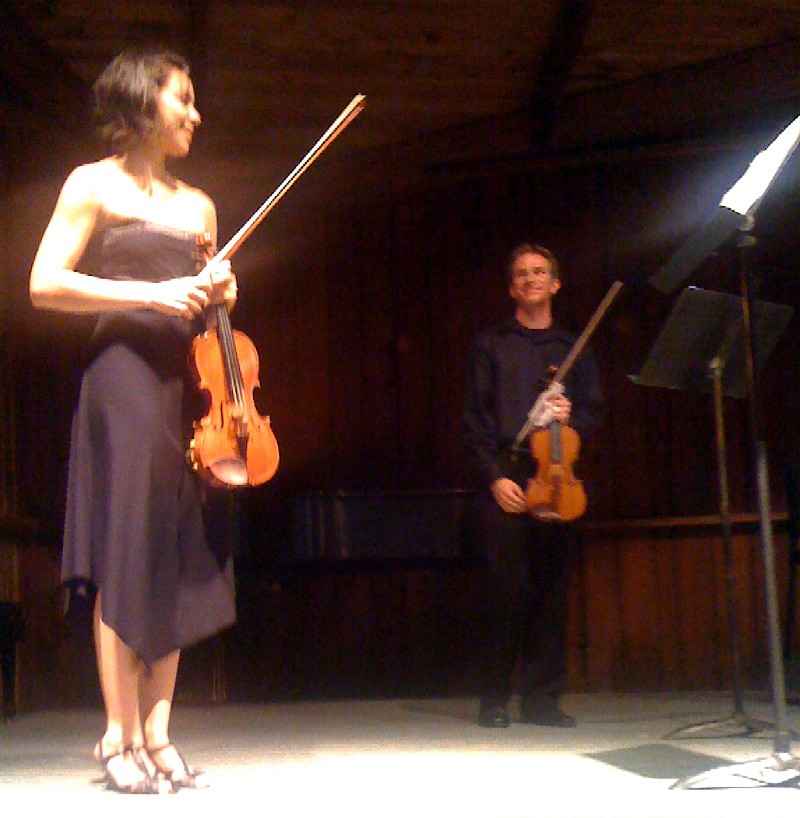
T he Second Quartet signifies for Carter a leap forward in terms of control of harmony (and, by extension, melody), register, and rhythm, from the smallest rhythm to the largest form, and including the way in which time passes in the piece—in each part, and in the whole.”The BSO’s Festival of Contemporary Music at Tanglewood (Elliott Carter Centenary) on Wednesday had a wonderful performance by members of the New Fromm ensemble.
— Robert Kirzinger, Program Notes, p. 67.
- Quintet for Piano and Strings (1991) [Henry Ward (oboe), Raymond Santos (clarinet), Rose Vrbsky (bassoon), Lauren Moore (horn), Nolan Pearson (piano)]
- String Quartet No. 2 (1959) [Stephanie Nussbaum (1st violin), Martin Schultz (2nd violin), Garth Zehngut (viola), Kathryn Bates (cello)]
From the tiny scale of microsounds and fragments and motives, to the large scale of whole movements of a piece, to the yet-larger scales of multiple works by a composer, a pattern normally only attains a level of significance if it occurs more than once, in more than one setting. In Carter’s chamber music works we experience a wide and innovative range of evocative patterns. For those of you who are interested in the theory of such things, the recurrence of patterns is treated from a post-modern intertextuality and other perspectives in Steven Jan’s nice book, ‘The Memetics of Music’.
But it’s more than that, more than sequences and recurrences. In Wednesday afternoon’s performance: we experienced the ‘vascular’ or ‘hemodynamic’ propagation of musical motives and phrases, as though they were blood. Within a Carter piece, it as though the expression in one instrument’s part is like a contraction of the heart, sending a pulse of blood outward into the circulatory system—of the composition, of the performance. Depending on the distance traveled and the stretchiness or ‘compliance’ of the blood vessels (the channels of acoustic and visual communication that prevail amongst the performers and the neurophysiology of their attention), the pressure ‘wave’ that is ejected in each pulse propagates with a finite speed and has its effects on the other body systems some milliseconds to seconds later. In other words, the patterns propagate, not so much as intimate ‘conversations’, but as though they were blood pressure waves from successive heartbeats among the various organs (instruments/parts) that comprise this living organism of performers.

Furthermore, between and among compositions by a particular composer like Carter, I think the morphologically and dynamically similar expressions are like Richard Dawkins’s ‘selfish genes’, propagating down through generations of a species. The stylized Carterian naturalism to which conductor Oliver Knussen referred on Monday here arises in part through a kind of organic, self-replicating, mutually-reinforcing recursion. In the ‘refinements’ of Carter’s style, we see a cumulative evolutionary ‘selection’ among the best and most effective of these self-conserving compositional ‘genes’. (I suppose the idea can be over-done, pushed beyond the limits of its validity. All I am saying is that there is more to the human composer than intellect and ‘will’. There is an unconscious, organic element, too. And only by hearing several pieces in close succession—ones composed decades apart from each other—only by doing this is one likely to hear these possibilities and think these thoughts.)
Propagation of expressions in ‘waves’. The sensations of point, pulse (series of points), line (tone), and surface (texture) emerge as acoustic particle density increases. Sounds coalesce, evaporate, and mutate into other sounds—and they do so as though they had mass and viscosity. This Carter quintet and this Carter quartet feel as though they were made of living, flowing blood.

What do I deduce from this? Rather than looking at the performer as an ‘instrument’ of the analyst/composer—as an ‘executant’—we should remember that the performer’s interpretive choices are themselves inherently analytical. But (of course!) the performer’s ‘analysis’ is not 100% cerebral. The neurophysiology of pitch and rhythm kicks in, and—here, nicely illustrated by the Tanglewood New Fromm Players’ performance of these Carter pieces—we get these genuine, honest, primal, highly physical interpretive responses. Some of you Conservatory-based theorists may want to confer with your cardiologist and neurophysiologist colleagues over in the School of Medicine, to see whether the analytics that are used to study human circulatory and nervous systems can be brought to bear on better understanding some of this wonderful, exciting music by Elliott Carter. And have a look at some of the sources in the list of links below.
Thank you for this superb performance! Bravo, New Fromm artists!

- BSO Tanglewood Festival of Contemporary Music
- Carter page at Classical.net
- Carter Centenary website
- Kozinn A. Blogging at Tanglewood on NYT ArtsBeat.
- Barolsky D. The performer as analyst. MTO 2007; 13:1
- Cope D. Computer Models of Musical Creativity. MIT, 2005.
- Jan S. The Memetics of Music. Ashgate, 2007.
- Kostek B. Perception-Based Data Processing in Acoustics: Applications to Music Information Retrieval and Psychophysiology of Hearing. Springer, 2005.
- Lester J. “Performance and Analysis: Interaction and Interpretation,” in The Practice of Performance: Studies in Musical Interpretation, ed. John Rink. 2e. Cambridge Univ, 2005, pp. 197–216.
- Marsden A. Representing Musical Time: A Temporal-Logic Approach. Routledge, 2000.
- Mazzola G. The Topos of Music: Geometric Logic of Concepts, Theory, and Performance. Birkhäuser Basel, 2003.
- Temperley D. Music and Probability. MIT, 2007.
- Temperley D. The Cognition of Basic Musical Structures. MIT, 2004.
- Thaut M. Rhythm, Music, and the Brain: Scientific Foundations and Clinical Applications. MIT, 2007.
- SimTK cardiovascular dynamics simulation

I love Elliott, but I loved his music first. (I can’t do this in reverse; I can’t love the music just based on a rapport with the composer.)”
— Conductor James Levine.
No comments:
Post a Comment